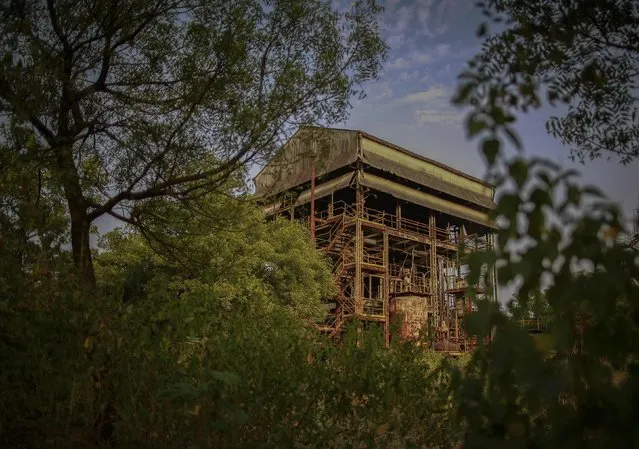
Trees frame a rusting building at the abandoned former Union Carbide pesticide plant in Bhopal November 11, 2014. On the night of December 2, 1984, the factory owned by the U.S. multinational Union Carbide Corporation accidentally leaked cyanide gas into the air, killing thousands of largely poor Indians in the central city of Bhopal. (Photo by Danish Siddiqui/Reuters)

Plants grow over a staircase at the abandoned former Union Carbide pesticide plant in Bhopal November 14, 2014. (Photo by Danish Siddiqui/Reuters)
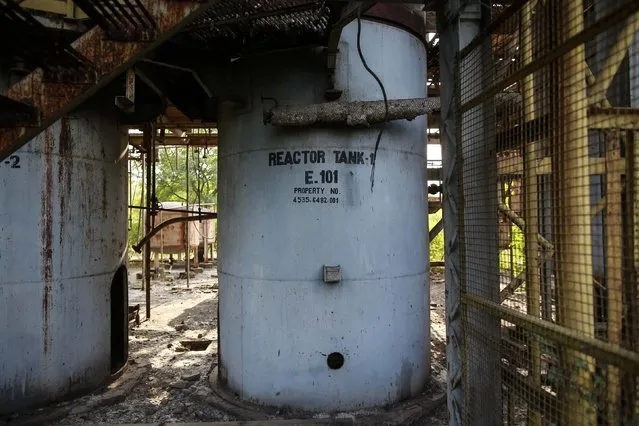
A reactor tank stands among the ruins of the abandoned former Union Carbide pesticide plant in Bhopal November 14, 2014. (Photo by Danish Siddiqui/Reuters)
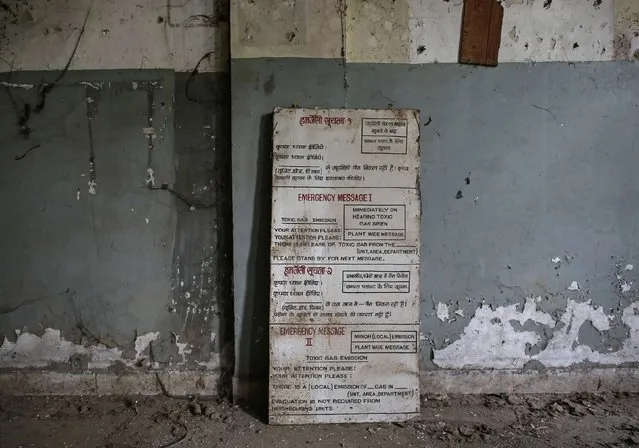
A sign outlining emergency procedures, in the event of a gas leak, stands against a wall in the control room of the abandoned former Union Carbide pesticide plant in Bhopal November 11, 2014. (Photo by Danish Siddiqui/Reuters)
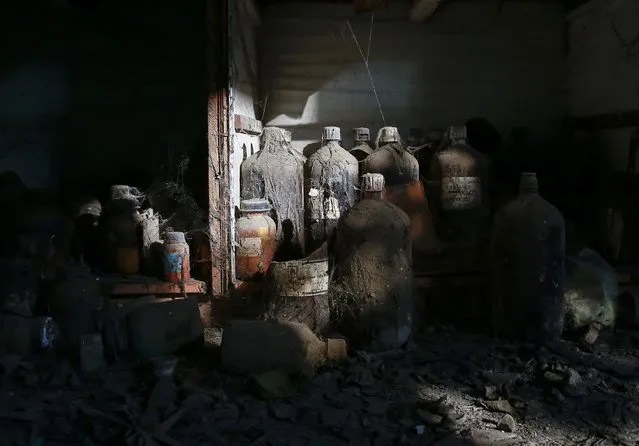
Thick dust covers chemical bottles in a laboratory at the abandoned former Union Carbide pesticide plant in Bhopal November 14, 2014. (Photo by Danish Siddiqui/Reuters)
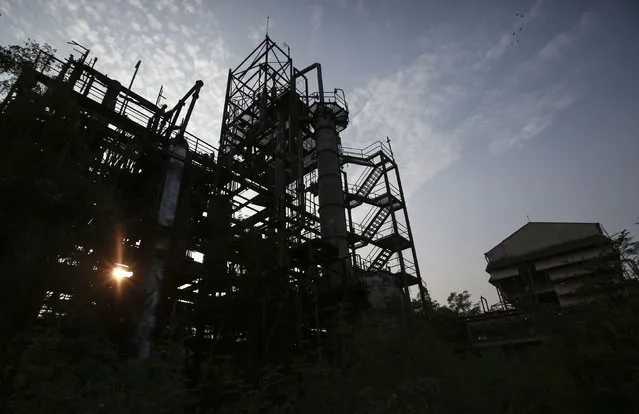
The sun sets behind the abandoned former Union Carbide pesticide plant in Bhopal November 11, 2014. (Photo by Danish Siddiqui/Reuters)
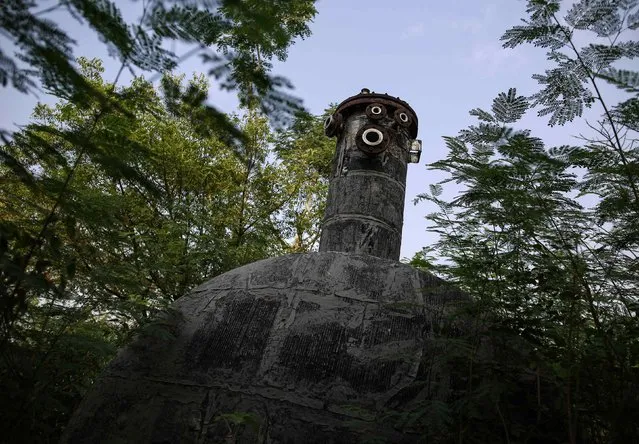
Trees surround a chemical tank at the abandoned former Union Carbide pesticide plant in Bhopal November 14, 2014. (Photo by Danish Siddiqui/Reuters)
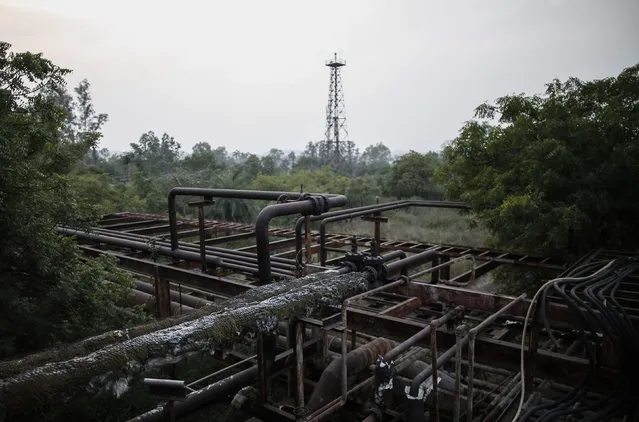
A network of pipes rust at the abandoned former Union Carbide pesticide plant in Bhopal November 14, 2014. (Photo by Danish Siddiqui/Reuters)
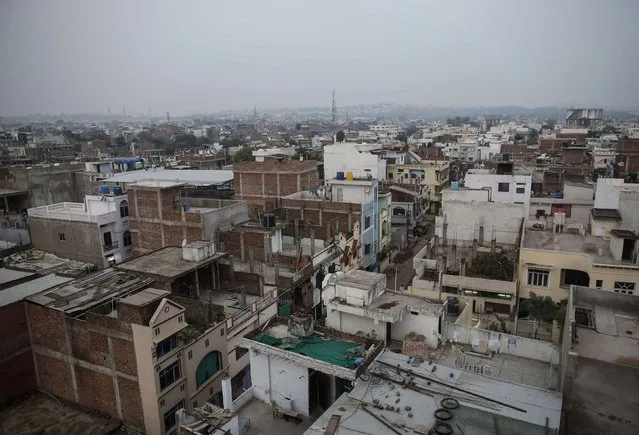
General view of a neighbourhood next to the abandoned former Union Carbide pesticide plant in Bhopal November 15, 2014. (Photo by Danish Siddiqui/Reuters)

Residents sit atop a crumbling wall beside a pond near the abandoned former Union Carbide pesticide plant in Bhopal November 11, 2014. (Photo by Danish Siddiqui/Reuters)
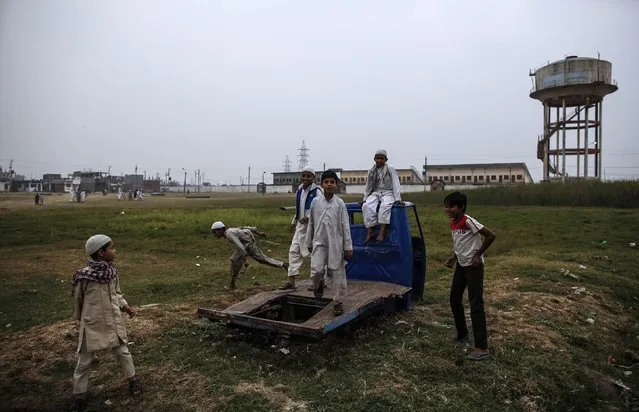
Children play on a field next to the abandoned former Union Carbide pesticide plant in Bhopal November 15, 2014. (Photo by Danish Siddiqui/Reuters)
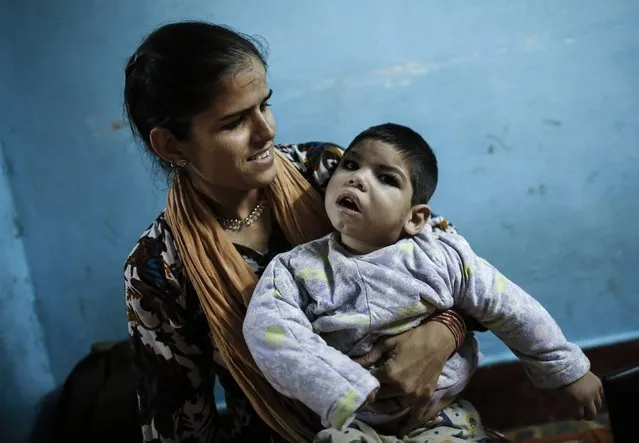
Three-year-old Abdul, who suffers from mental and physical disabilities plays with his mother Rukhsana at their house in Bhopal November 13, 2014. Abdul receives treatment at a rehabilitation centre supported by Bhopal Medical Appeal which only treats families they believe have been affected by the Union Carbide gas leak 30 years ago. Human rights groups say that thousands of tonnes of hazardous waste remain buried underground, and the government has conceded it is contaminated. There has, however, been no long-term epidemiological research which conclusively proves that birth defects are directly related to the drinking of the contaminated water. (Photo by Danish Siddiqui/Reuters)
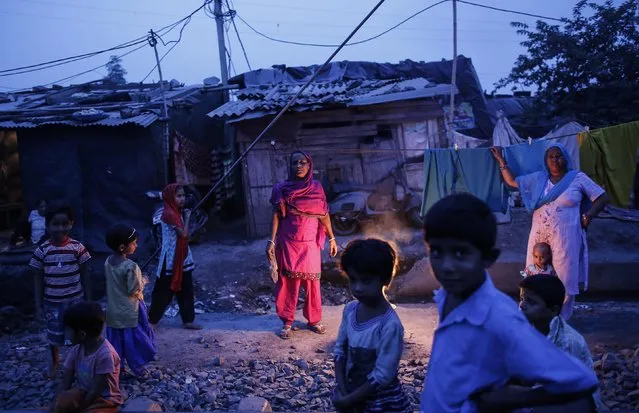
Fifty-five-year-old Subna Bi (C), poses for a picture outside her house next to the abandoned former Union Carbide Corp pesticide plant in Bhopal November 15, 2014. (Photo by Danish Siddiqui/Reuters)

Five-year-old Saagar, who suffers from mental and physical disabilities is held by his mother Komal, as she poses for a picture at their house in a slum in Bhopal November 12, 2014. Saagar receives treatment at a rehabilitation centre supported by Bhopal Medical Appeal which only treats families they believe have been affected by the Union Carbide gas leak 30 years ago. (Photo by Danish Siddiqui/Reuters)
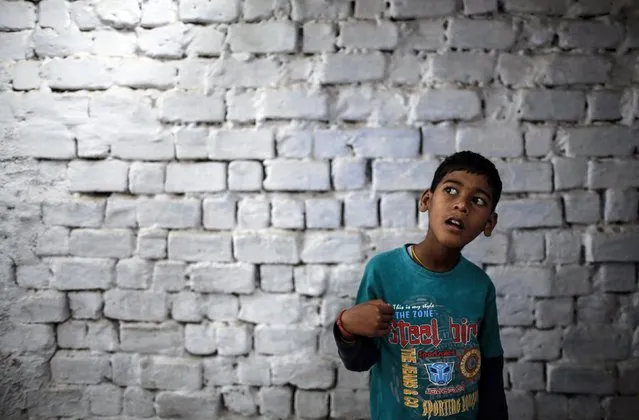
Eight-year-old Abhi, who suffers from mental and physical disabilities, plays outside his house at a slum in Bhopal November 15, 2014. Abhi receives treatment at a rehabilitation centre supported by Bhopal Medical Appeal which only treats families they believe have been affected by the Union Carbide gas leak 30 years ago. (Photo by Danish Siddiqui/Reuters)
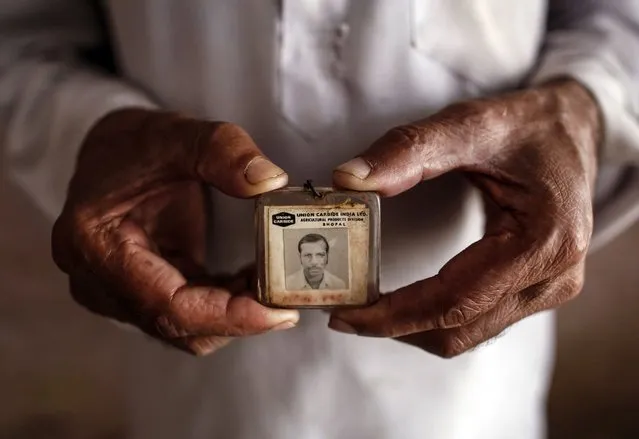
Former maintenance worker, Mohammed Yaqub, poses in his house with his old identity card from the defunct Union Carbide pesticide plant in Bhopal where he once worked November 13, 2014. (Photo by Danish Siddiqui/Reuters)
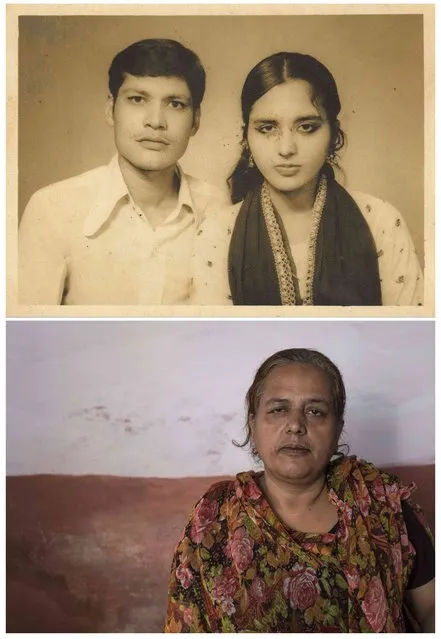
A combination picture shows Zubeida (R) with her husband Salim Rehman in an undated family photograph (top), and (bottom) Zubeida Bi alone in Bhopal on November 11, 2014. Bi said that Rehman died as a result of gas poisoning after the 1984 Bhopal disaster. (Photo by Danish Siddiqui/Reuters)
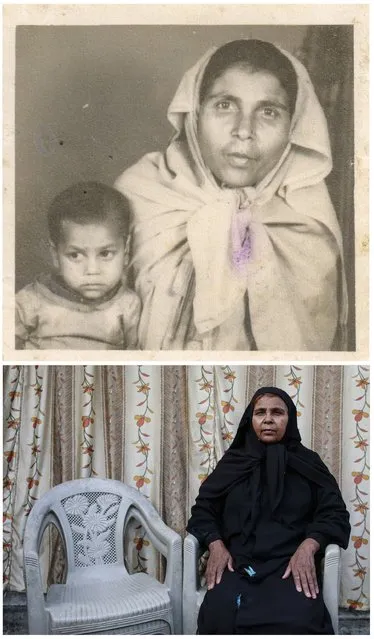
A combination picture shows Bhoori Bi (R) with her daughter Chandni in an undated family photograph (top) and (bottom) Bhoori Bi alone in Bhopal November 12, 2014. Bi said that Chandni died as a result of gas poisoning after the 1984 Bhopal disaster. (Photo by Danish Siddiqui/Reuters)
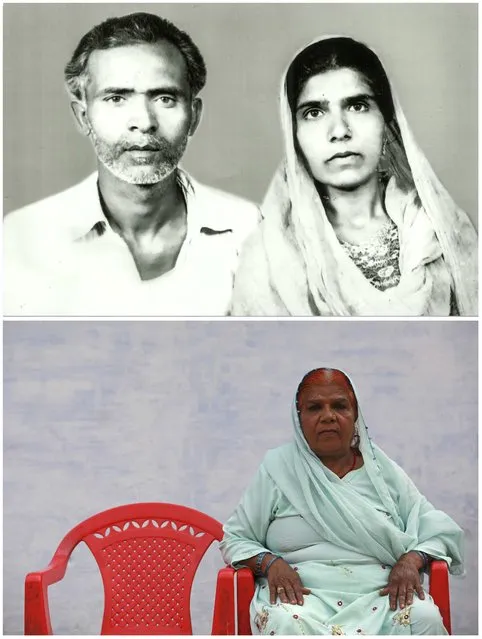
A combination picture shows Aamna (R) with her husband Munawar Ali in an undated family photograph (top) and (bottom) Aamna alone in Bhopal November 13, 2014. Aamna said that Ali died as a result of gas poisoning after the 1984 Bhopal disaster. (Photo by Danish Siddiqui/Reuters)
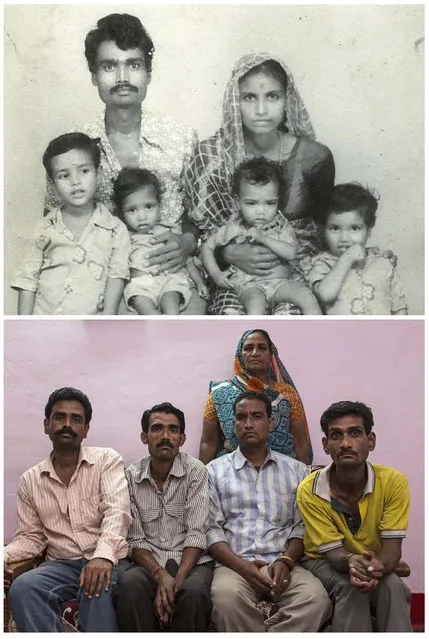
In a combination picture Lata Bai (top right) is seen with her husband Ashok Badgujjar and their four sons in an undated family photograph (top) and (bottom) Lata Bai (top right) is seen with her four sons in Bhopal November 12, 2014. Bai said that Badgujjar died as a result of gas poisoning after the 1984 Bhopal disaster. (Photo by Danish Siddiqui/Reuters)
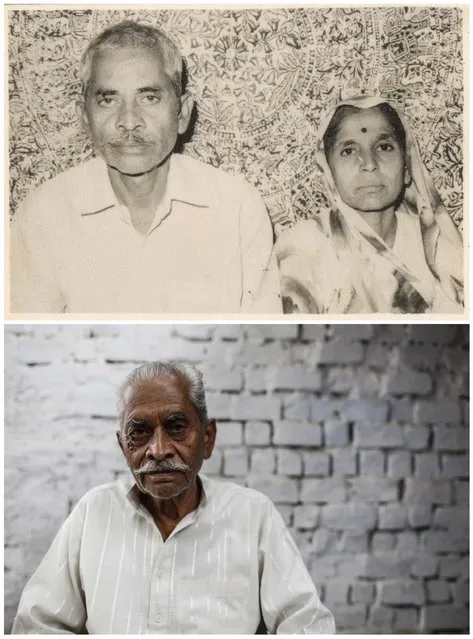
A combination picture shows Ram Chandra (L) with his wife Prema in an undated family photograph (top) and (bottom) Ram Chandra alone in Bhopal November 15, 2014. Chandra said that Prema died as a result of gas poisoning after the 1984 Bhopal disaster. (Photo by Danish Siddiqui/Reuters)
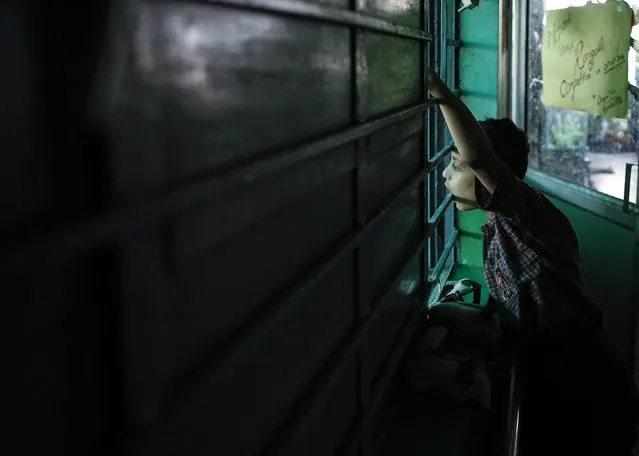
A boy who was born with a mental disability looks out of a window at a rehabilitation centre supported by Bhopal Medical Appeal for children who were born with mental and physical disabilities in Bhopal November 11, 2014. (Photo by Danish Siddiqui/Reuters)
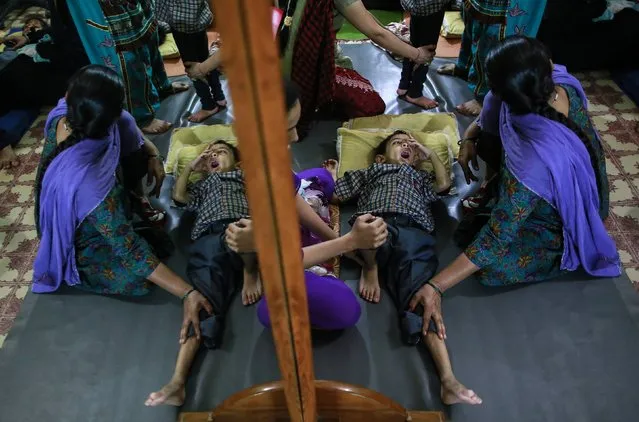
A boy receives treatment at a rehabilitation centre supported by Bhopal Medical Appeal for children who were born with mental and physical disabilities in Bhopal November 11, 2014. The rehabilitation centre only treats families they believe have been affected by the Union Carbide gas leak 30 years ago. (Photo by Danish Siddiqui/Reuters)
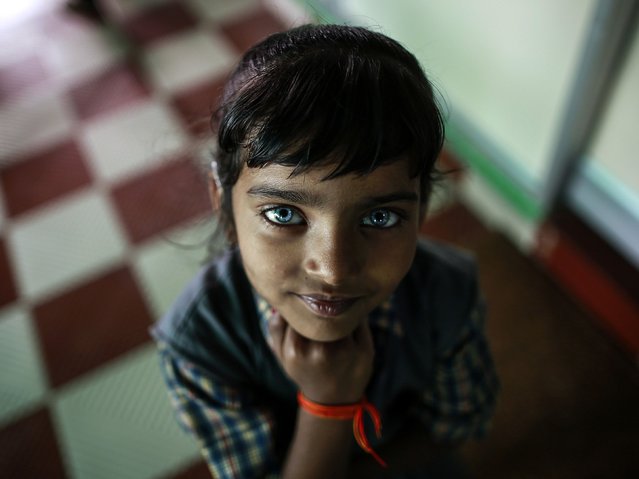
A girl who suffers from hearing and speech disorders reacts to the camera at a rehabilitation centre supported by Bhopal Medical Appeal, for children who were born with mental and physical disabilities, in Bhopal November 11, 2014. The rehabilitation centre only treats families they believe have been affected by the Union Carbide gas leak 30 years ago. (Photo by Danish Siddiqui/Reuters)
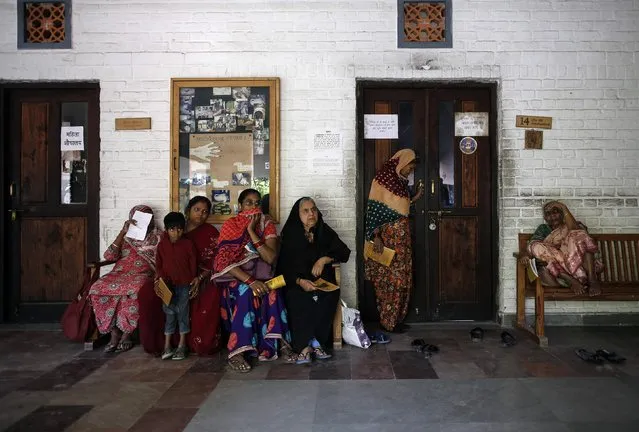
People wait to receive medicine at a clinic supported by Bhopal Medical Appeal for people affected by the 1984 Bhopal gas disaster in Bhopal November 14, 2014. Human rights groups say that thousands of tonnes of hazardous waste remain buried underground, and the government has conceded it is contaminated. (Photo by Danish Siddiqui/Reuters)
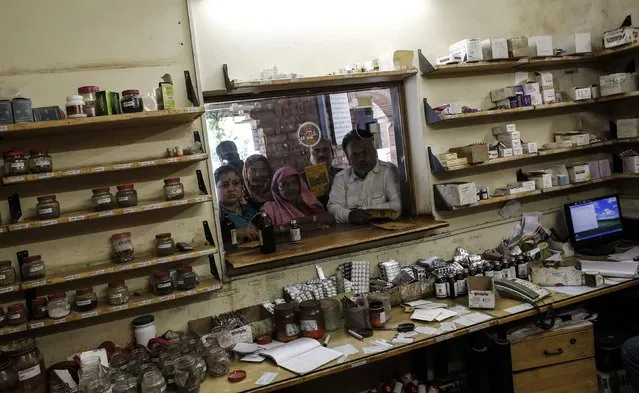
People wait to receive medicine at a clinic supported by Bhopal Medical Appeal for people affected by the 1984 Bhopal gas disaster in Bhopal November 14, 2014. (Photo by Danish Siddiqui/Reuters)
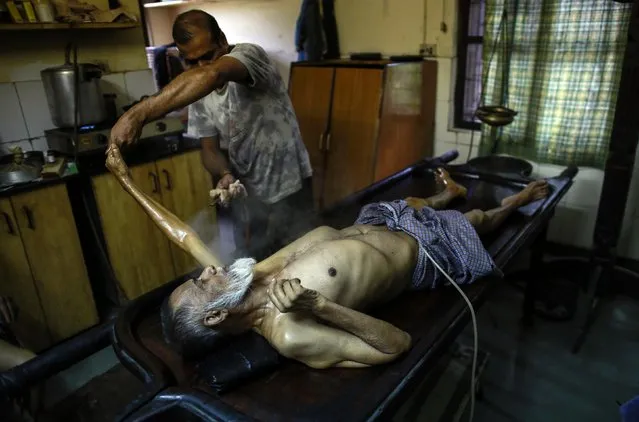
Sixty-four-year-old Zafar Ahmed, receives treatment at a clinic supported by Bhopal Medical Appeal in Bhopal November 14, 2014. (Photo by Danish Siddiqui/Reuters)
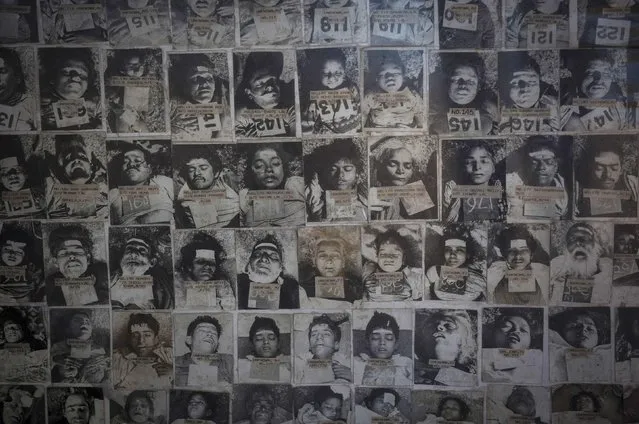
A panel displays pictures of residents who died in the 1984 Bhopal disaster at the forensic department of a hospital in Bhopal November 14, 2014. (Photo by Danish Siddiqui/Reuters)
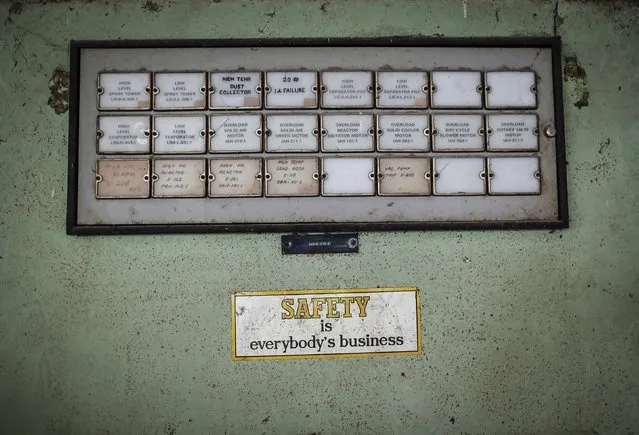
A sticker is seen next to a panel in the control room of the abandoned former Union Carbide Corp pesticide plant in Bhopal November 14, 2014. (Photo by Danish Siddiqui/Reuters)
30 Nov 2014 12:00:00,
post received
0 comments
